
Originally designed to access the interior of the Adirondack wilderness, the guide boat is a miracle of ultralight engineering. Meticulously crafted, the original planked guide boats weighed seventy pounds yet could carry a thousand. This enabled the boats to traverse the many portages and link the many lakes and rivers in these glacially carved mountains.
My journey with the guide boat began after I spent a few weeks rowing an eighteen foot sailboat in the Sea of Cortez. A dedicated lifetime kayaker, I was surprised at how much I loved the rowing experience, and equally surprised at how seaworthy a rowboat could be. I had plans that when I returned home I would row all the time. One year passed, then two, and then I sold the boat having used it only once since leaving mexico. The problem was that whenever I wanted to go boating I could deal with the fiasco of the trailer, or I could throw a kayak on the car and be in the water in a half hour. The kayak always won.
Then a friend mentioned that I might want to check out the Adirondack guide boat. I bought some plans and a few books to look at, sought some expert advice, and most importantly, recruited a student to keep me motivated through the process. Now if I were a real boat builder I'd be building this boat out of spruce crooks, thin planking, 2100 brass screws, and 4000 individually clench nailed copper tacks, but since I'm a skin-on-frame guy I decided to go skin-on-frame. Most skin boats are adaptations, however, because the guideboat is such a perfect shape, I was reluctant to interpret the lines. Instead, I chose to build my boats as an exact copy of an original shape, using a similar process to the original.
We started with a table of offsets, a set of coordinates from which the lines of a boat are taken. I say we because I avoided days of tedious hand lofting by persuading my girlfriend Jackie to do days of tedious computer lofting instead. Sometimes it really pays to have a draftswoman handy! Next we made the guide boat builders prize possesion, a set of rib forms that will overlay laminations (or a natural wood crook) to reproduce the shape.
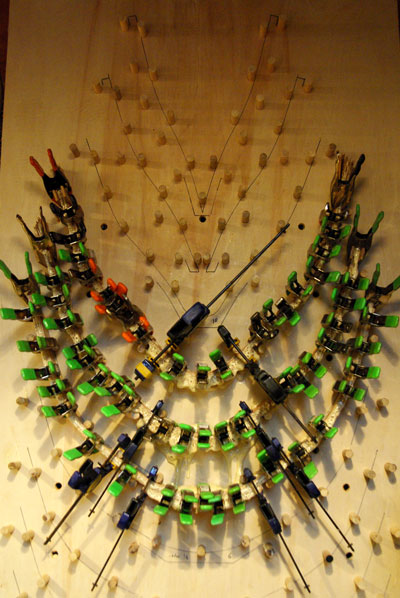
Day 1, cedar strips are laminated on a form to make the ribs,
Day 2 we slice these thick ribs lengthwise with a table saw, each lamination making four thin cedar guide boat ribs.
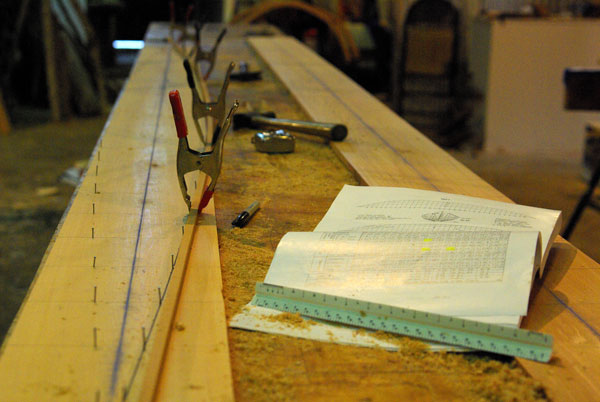
Also on day 2, we lay out the flat bottom board the foundation of the guide boat.
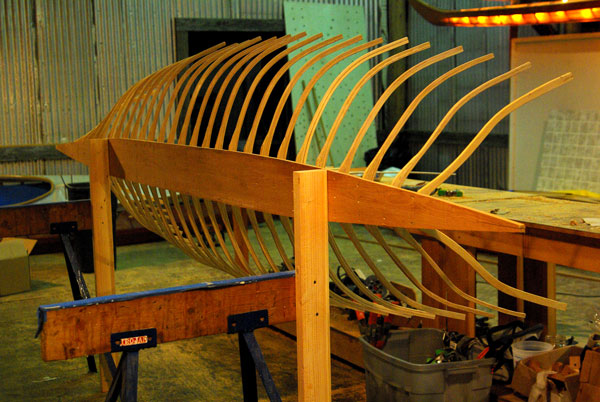
On day 3 we screw the ribs to the bottom board. Peter, my phantom apprentice is a great help but doesn't like his picture taken.
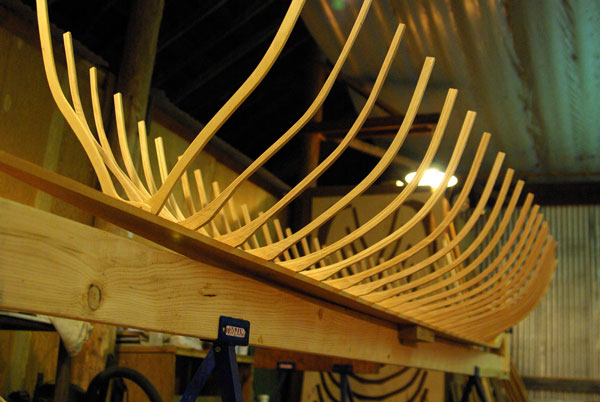
With ribs and stems mounted the boat is turned right side up and screwed to a jig that will preserve the rocker and plumb of the stems.

Day 4, next we'll be needing some sheer strakes so we laminate three red cedar boards to make a two inch sheer strake.
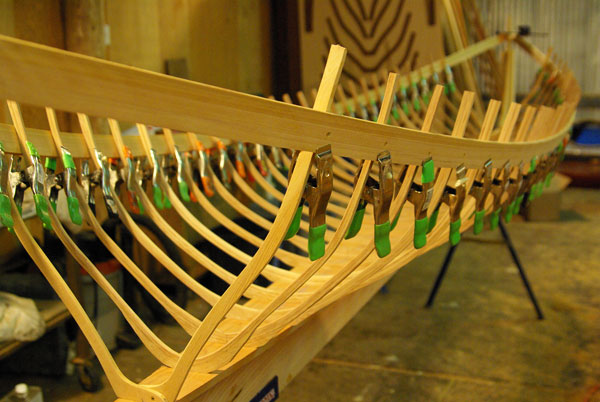
The laminations are sliced on the table saw and then screwed to the ribs and stems
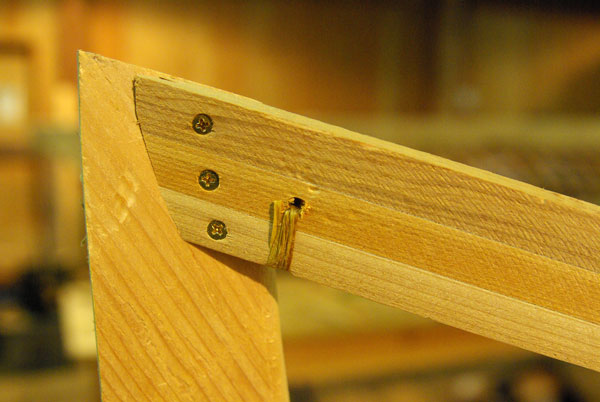
I added a lashing for a little extra security.
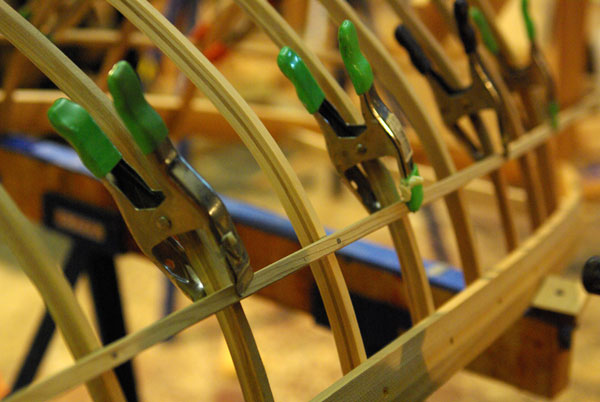
Day 5, we turn the boats over and then clamp stringers on. The stringers are fastened with carefully piloted stainless ring nails. The stringers are 7/16 square and the ribs are 5/16 x 3/4 on edge.
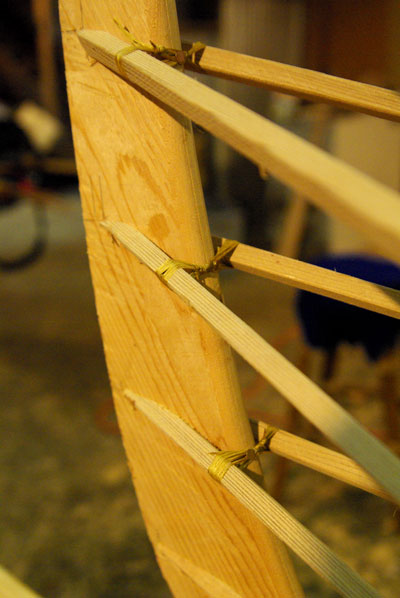
Stringers are faired into the stems and then lashed, an easy process.
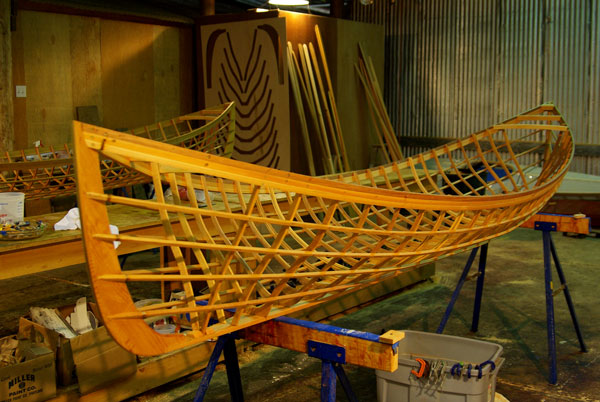
Day 6, we finish the frames by adding support for the decks and then oiling the boats.
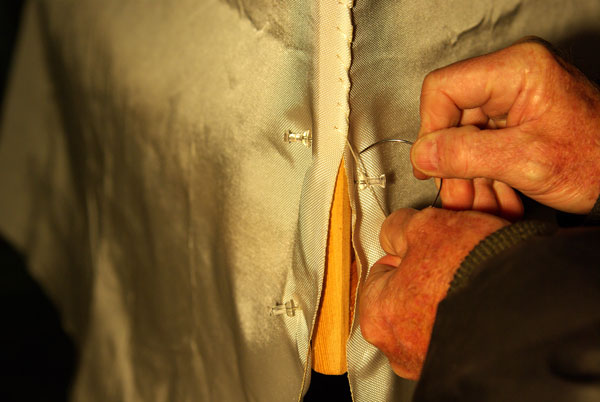
Day 7, a lightweight ballistic nylon skin is laid over the frame, then cut and sewn up the stems.
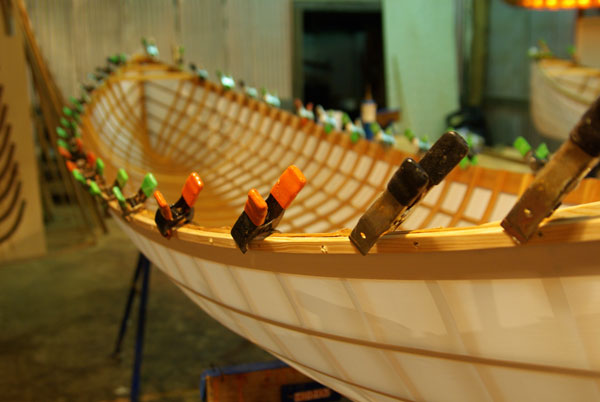
Then skin is stapled to the frame and the staples are hidden with a fir gunwale. Next the skin is saturated with a tough 2 part polyurethane.
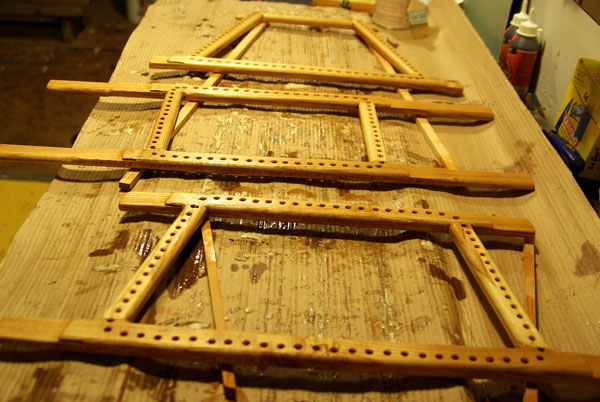
The next week I work intermittently on the finishing work, like these seats. I really blasted through these details and my finish work is crude compared to the original, however, I think it is appropriate for a boat built so quickly.
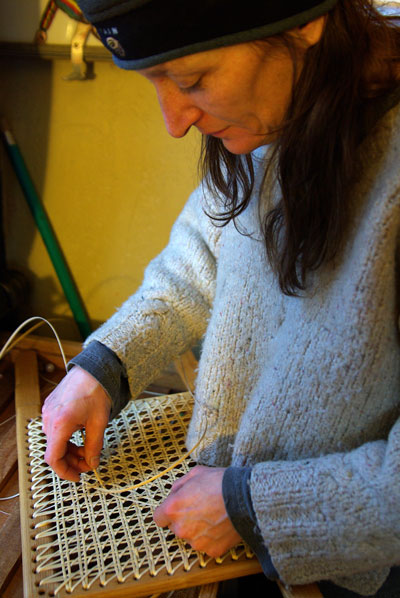
Hand caning the seats was no fun, luckily I had help.
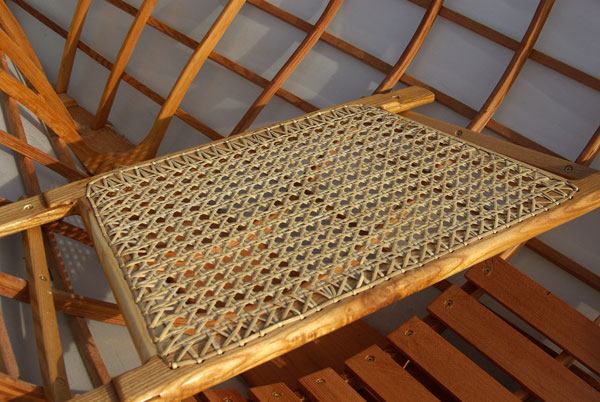
The finished product.
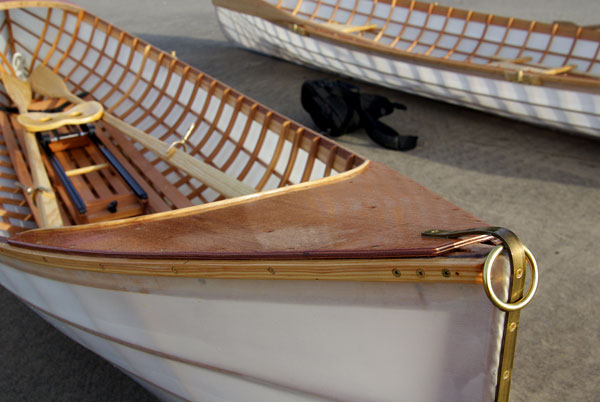
My deck and end protection, marine plywood, brass flat stock, bronze ring. Like I said, crude but effective. On the smaller boat we installed a sliding seat.
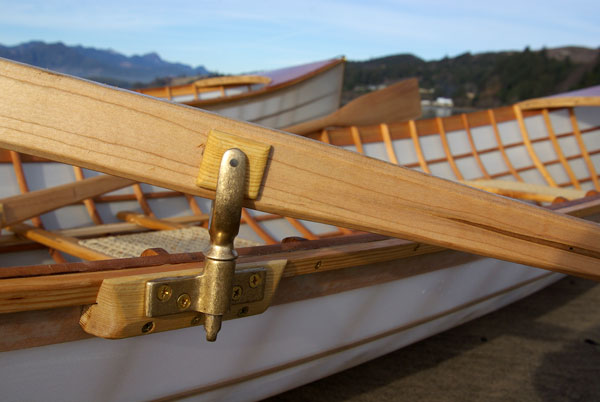
Traditional guide boat oars are permanently pinned allowing the rower to drop the oars and deal with a fish, or shoot a deer. I loved these non-feathering oars and had no trouble with the cross armed rowing stroke caused by the overlapping handles. Traditional guide boat hardware is about $250, I couldn't afford that so I used a set of $50 pinned bronzed oarpins.
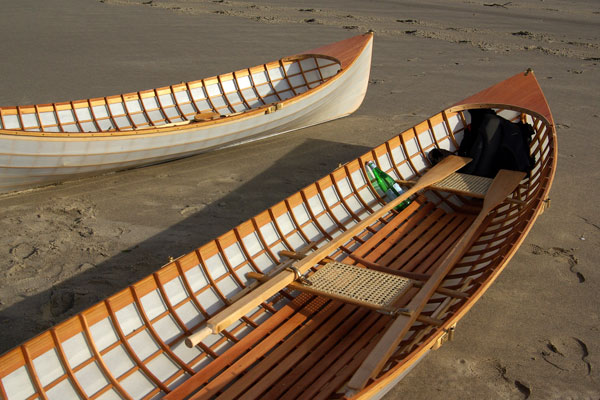
I have to thank my friend Alec who did the layout for these traditional guide boat oars, to function correctly they must be built very lightly and the shaping is somewhat precise to preserve the strength. He did most of the oar shaping while I finished up the boats.
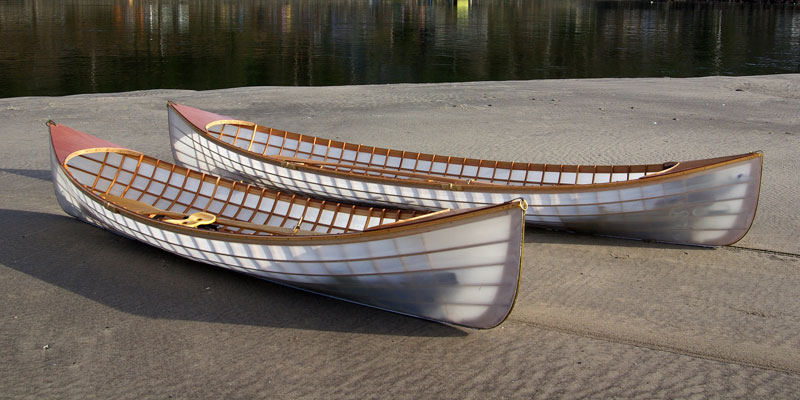
The finished product, launched two weeks from the start of the project.
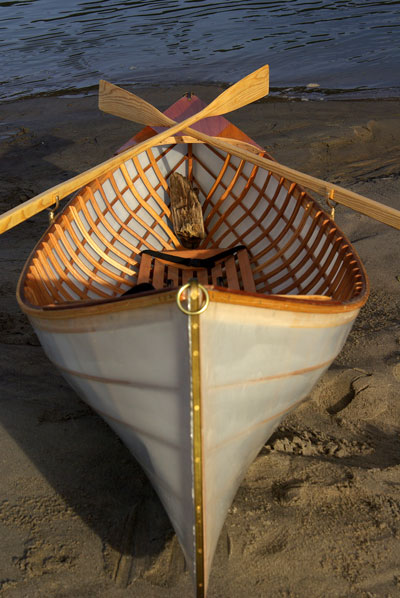
Beautiful, I'm so in love with the thirteen footer that I don't want to give it back to Peter (the phantom apprentice). Of course, the fifteen footer isn't bad either.
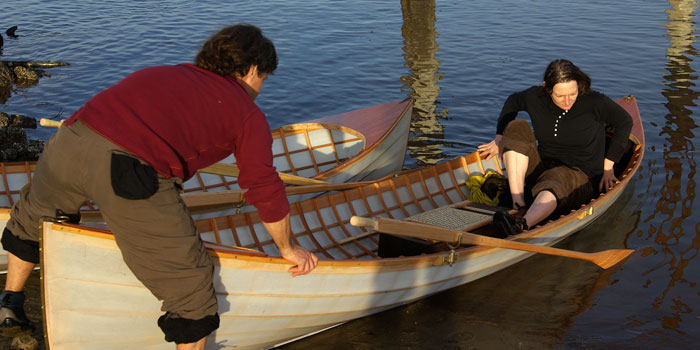
Getting ready to launch, Alec stabilizes the boat while Jackie gets settled.
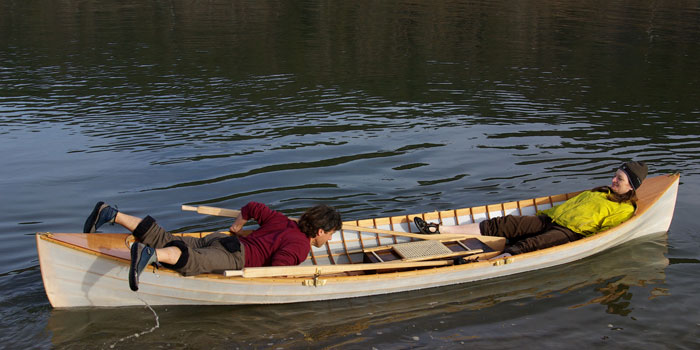
Then, with a leap of faith, Alec lunges forward and pushes off.
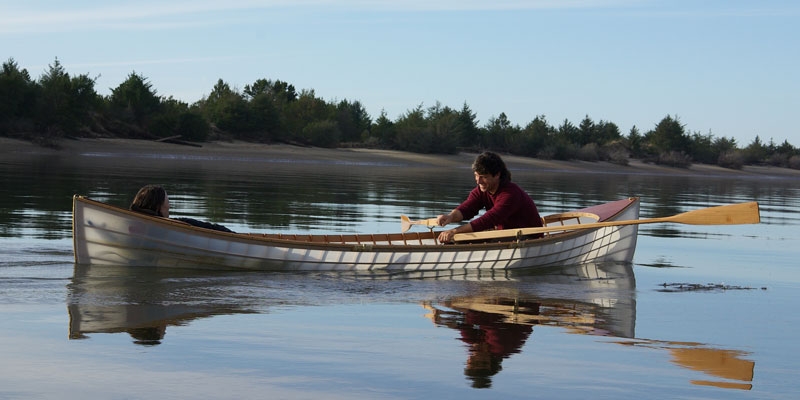
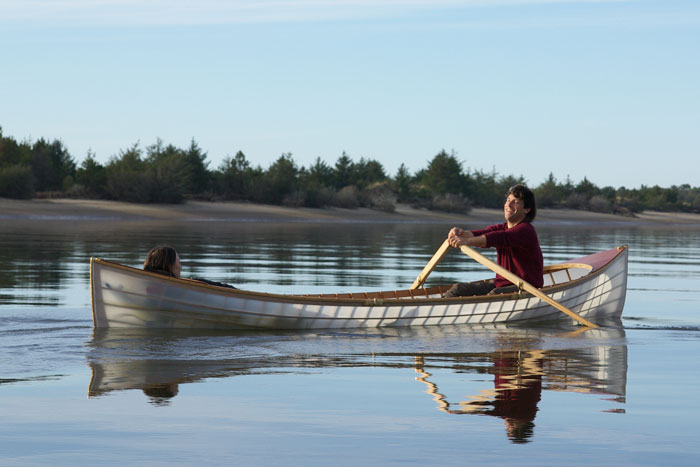
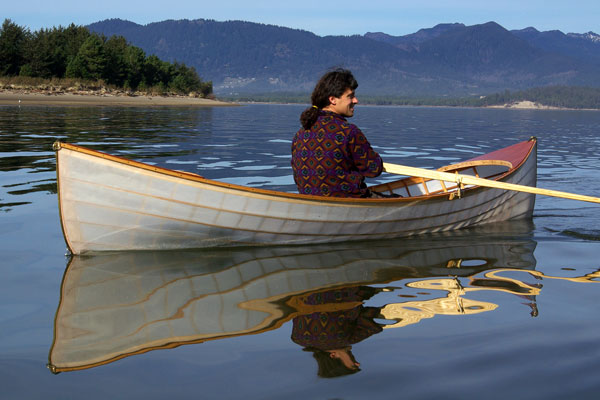
Alec in the thirteen footer, this boat could easily accomodate another person.
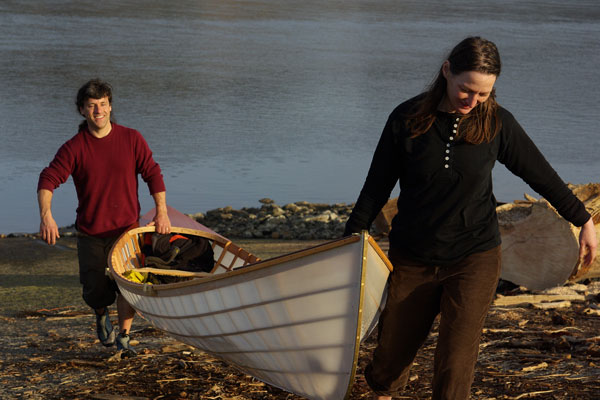
Rowing these boats was a revelation, swift, silent, and powerful. I can only describe it as addictive. Even the carry was a pleasure. The thirteen footer weighs thirty-one pounds and the fifteen footer weighs forty-two. The thirteen footer seems plenty stiff built entirely of red cedar, I think the fifteen footer will benefit from a little more framing, perhaps increasing it's weight by five pounds at most. Materials cost for each boat was nine hundred dollars.
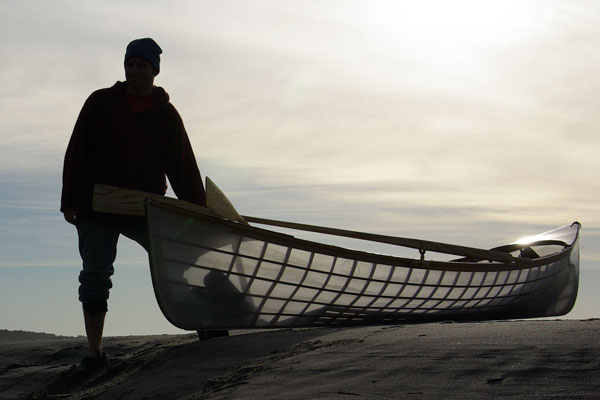
Building the skin-on-frame Adirondack guide boat has given me profound respect for the meticulous craftmanship of the original. It is also the most beautiful and rewarding thing I have ever built in my life. Sincere thanks to The Adirondack Museum, Geoff Burke, Rob Frenette, Ben Fuller, Jackie, Alec, and Peter. I look forward to sharing this boat in a class this summer.
back to Cape Falcon Kayak